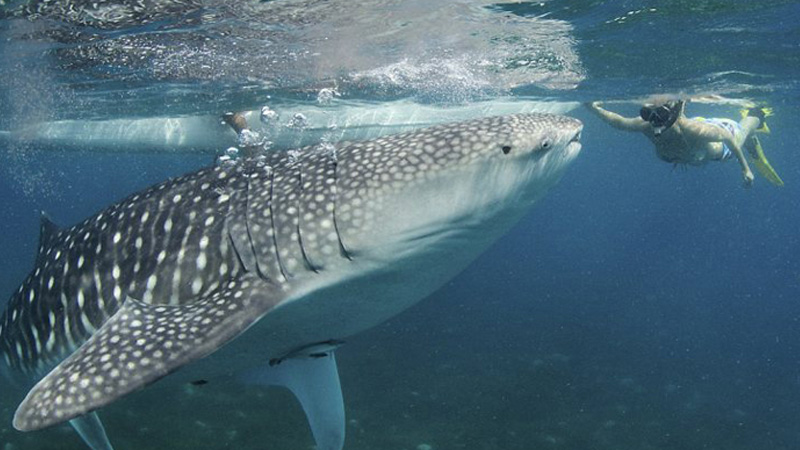MANILA, Philippines — Whale sharks are making a comeback in the tourist town of Donsol but it seems their schedule may have changed.
The World Wide Fund for Nature (WWF)-Philippines on Thursday reported an unusual rise in “interactions” with the giant fish in Donsol in the last quarter of 2013, resulting in an increase in the number of tourists.
“For two years now, whale shark sightings in Donsol have been scant during the normal December to May season. In October 2012, however, we noticed they came early. This November, we have been posting more and more interactions,” Donsol boat association president Lambert Avisado said.
“It seems that our Butandings have returned – but that they have changed their schedules,” he said in a WWF-Philippines news release.
For years, Donsol has been identified as a “butanding” hotspot, hosting one of the largest aggregations of whale shark, the world’s largest fish, which feeds mainly on microscopic plankton. Jumps and dips in the number of sharks have dictated the success and failure of tourism, WWF said.
“We saw this drop in numbers once before – about 12 or 13 years ago,” according to Butanding Interaction Officer (BIO) association president Joel Briones.
“Since there were few whale sharks that year, tourist numbers plummeted. Since early November, however, we have recorded almost daily sightings. Word is getting around. Tourists are starting to arrive,” he said.
Historically, Donsol’s whale shark season coincided with “planktonic blooms,” WWF said.
“Each summer, plankton and swarms of tiny shrimp lure the giant filter feeders to linger near the surface – well within range of most skin divers and snorkelers,” it said.
Under normal circumstances, peak season tours promise from four to six assured interactions per trip, prompting Time Magazine to dub Donsol as the “Best Animal Encounter” in Asia in 2004.
“Whale sharks congregate in Donsol because of all the food,” WWF-Philippines Project Manager Raul Burce said.
“Plankton blooms occur when nutrients are discharged by Donsol’s rivers. To ensure that the Bay remains healthy, we must protect Donsol’s rivers,” he said.
WWF said it has been studying the composition and range of food in and around the bay.
The group is also performing computer-assisted whale shark photo identification and has doing satellite tagging since 2008, “to establish the number of sharks visiting Donsol, and to better understand where they go, and when.”
Three hundred eighty (380) whale sharks have been identified in five years of research in Donsol, WWF said.
“The habits of migratory pelagic creatures like whale sharks are naturally dynamic and hard to predict,” Burce said. “Given the volatility of depending on migratory creatures, Donsol and the greater area of the Ticao Pass, must find alternative ways to attract and retain visitors.”
Most famous for its whale sharks, Donsol boasts of other attractions – including afternoon mangrove tours and evening firefly cruises, according to the group.
“We should not solely rely on the whale sharks. Already we’re exploring alternative tourist destinations and are seeking sustainable livelihood programmes,” Donsol Mayor Jo Alcantara-Cruz said. “Whether guests see whale sharks or not, our aim is to have visitors leave our little town with a smile.”
“While still offering whale shark tours, WWF is looking into how Donsol can position itself as a jump-off point to explore Masbate, and the other attractions of the Ticao Pass,” Burce said.
“Tourists will have the best of both worlds – whale sharks, manta rays, firefly and mangrove tours, plus island-hopping. Ticao Pass and Donsol are part of an ecosystem that WWF has decided to invest in, and integrating management maximizes benefits for both areas, and for its people,” he said.
Related stories
Young ‘butanding’ dies in Cavite
Climate abuse seen in drop in ‘butanding’ sightings
‘Butanding’ bring revenue to Pangasinan town


